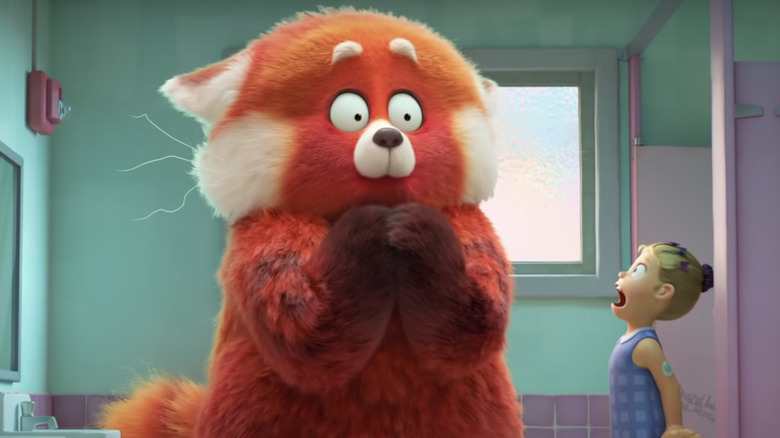Turning Red, 2022, Domee Shi
While much of what I will talk about in this blog post is applicable to large scale 3D animation projects as a whole, for this post, I will focus on “Turning Red”, a film recently released by Pixar. I think that one of the most inspirational (and relatable) facets of 3D animation is the time it takes to produce- of course earlier steps in the creative process in itself are time consuming, but even aspects of the pipeline that one might not even consider, like rendering, are extremely tedious. In animation, the rule of thumb is that 24 frames are shown per second of film, and at studios like Disney and Pixar, due to the amount of detail packed into each frame, rendering one frame is a process that takes about 24 hours. As a result, it is no surprise that Turning Red took four years to complete (a relatively quick turnaround for Pixar). While Autodesk Maya is the 3D animation software most commonly used for feature length films and games, Pixar uses its own software (what is, essentially, the in-studio version of Maya), called Presto. That being said, of course, through the course of production, in order to better capture life, usually animators will homebrew their own scripts, whether it is to better capture the bounce of curly hair (as with Brave), or further nail down the way water moves (as with Moana). This pattern is really interesting, as each film that gets released by major studios ends up not only being a (usually) well thought out story, but also, a display of new 3D animation technologies that push the medium forward. Recently, I have noticed that 3D animation is becoming more and more stylized (a trend I hope to see continue!), and I’m excited to see the new technologies that emerge with said stylization.

![[OLD SEMESTER] 15-104 • Introduction to Computing for Creative Practice](https://courses.ideate.cmu.edu/15-104/f2022/wp-content/uploads/2023/09/stop-banner.png)